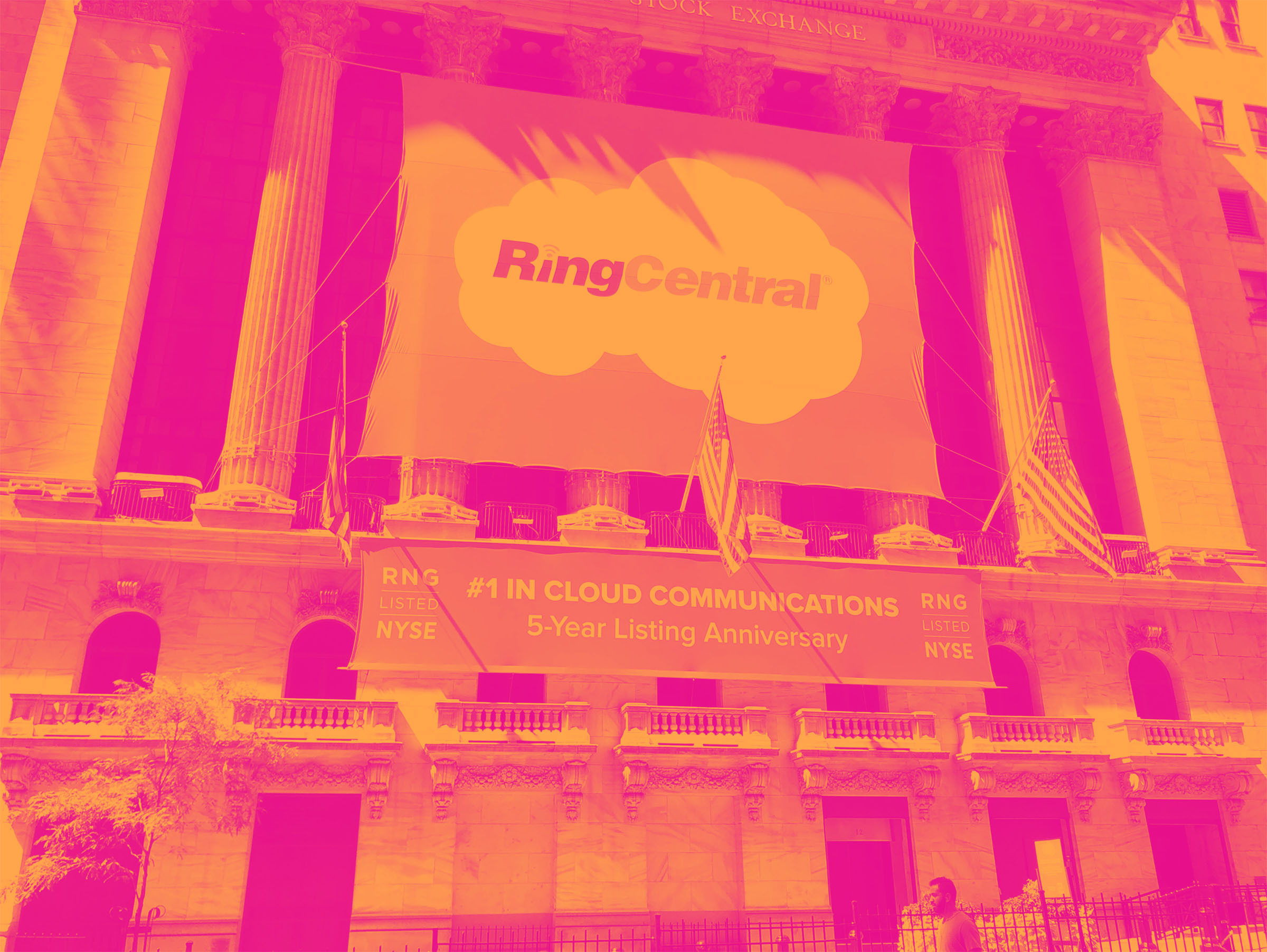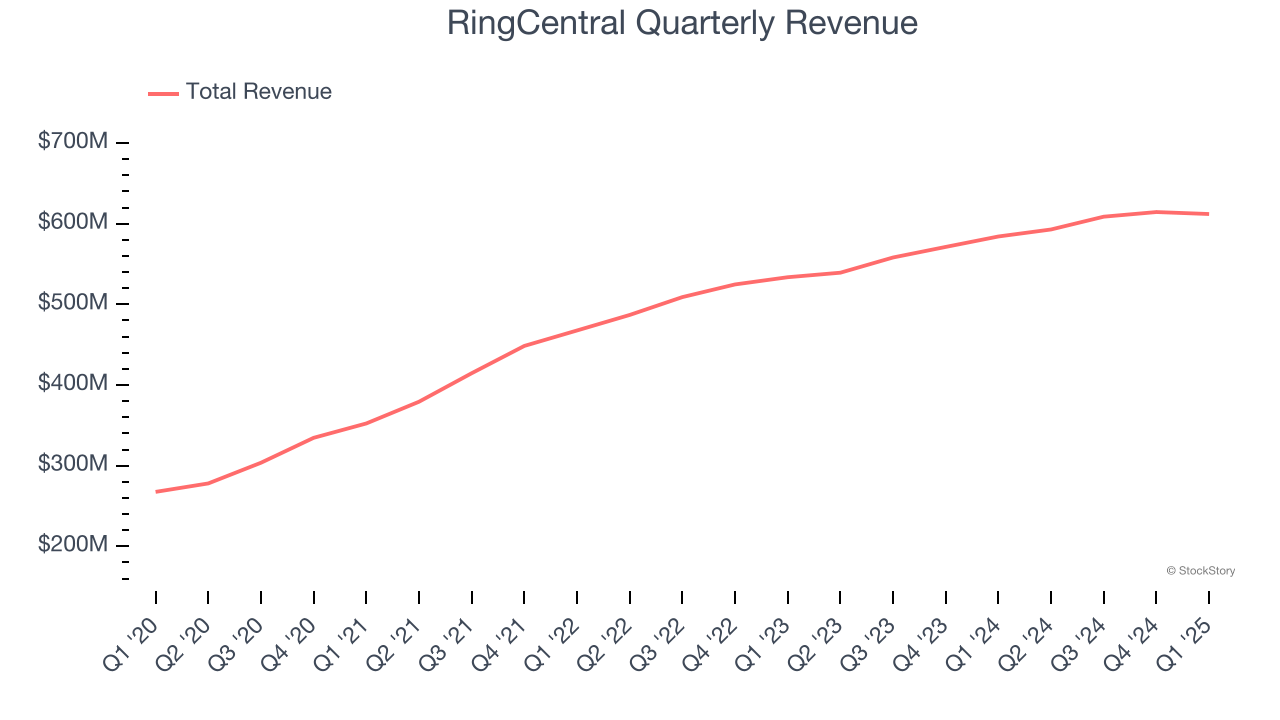
Office and call centre communications software provider RingCentral (NYSE:RNG) met Wall Street’s revenue expectations in Q1 CY2025, with sales up 4.8% year on year to $612.1 million. The company expects next quarter’s revenue to be around $617 million, close to analysts’ estimates. Its non-GAAP profit of $1 per share was 4.2% above analysts’ consensus estimates.
Is now the time to buy RingCentral? Find out by accessing our full research report, it’s free.
RingCentral (RNG) Q1 CY2025 Highlights:
- Revenue: $612.1 million vs analyst estimates of $610.6 million (4.8% year-on-year growth, in line)
- Adjusted EPS: $1 vs analyst estimates of $0.96 (4.2% beat)
- Adjusted Operating Income: $133.4 million vs analyst estimates of $129.7 million (21.8% margin, 2.8% beat)
- Revenue Guidance for Q2 CY2025 is $617 million at the midpoint, roughly in line with what analysts were expecting
- Management reiterated its full-year Adjusted EPS guidance of $4.20 at the midpoint
- Operating Margin: 0%, up from -1.9% in the same quarter last year
- Free Cash Flow Margin: 21.3%, up from 18.2% in the previous quarter
- Market Capitalization: $2.37 billion
“Our continued leadership in UCaaS, combined with strong early momentum in CCaaS and accelerated adoption of our AI-powered solutions, drove solid Q1 results, with ARR surpassing $2.5 billion ,” said Vlad Shmunis, RingCentral’s Founder, Chairman, and CEO.
Company Overview
Founded in 1999 during the dot-com era, RingCentral (NYSE:RNG) provides software as a service that unifies phone, text, fax, video calls and chat in one platform.
Sales Growth
Examining a company’s long-term performance can provide clues about its quality. Even a bad business can shine for one or two quarters, but a top-tier one grows for years. Over the last three years, RingCentral grew its sales at a 12.4% annual rate. Although this growth is acceptable on an absolute basis, it fell short of our standards for the software sector, which enjoys a number of secular tailwinds.

This quarter, RingCentral grew its revenue by 4.8% year on year, and its $612.1 million of revenue was in line with Wall Street’s estimates. Company management is currently guiding for a 4.1% year-on-year increase in sales next quarter.
Looking further ahead, sell-side analysts expect revenue to grow 4.9% over the next 12 months, a deceleration versus the last three years. This projection is underwhelming and indicates its products and services will see some demand headwinds.
Software is eating the world and there is virtually no industry left that has been untouched by it. That drives increasing demand for tools helping software developers do their jobs, whether it be monitoring critical cloud infrastructure, integrating audio and video functionality, or ensuring smooth content streaming. Click here to access a free report on our 3 favorite stocks to play this generational megatrend.
Customer Acquisition Efficiency
The customer acquisition cost (CAC) payback period represents the months required to recover the cost of acquiring a new customer. Essentially, it’s the break-even point for sales and marketing investments. A shorter CAC payback period is ideal, as it implies better returns on investment and business scalability.
RingCentral’s recent customer acquisition efforts haven’t yielded returns as its CAC payback period was negative this quarter, meaning its incremental sales and marketing investments outpaced its revenue. The company’s inefficiency indicates it operates in a highly competitive environment where there is little differentiation between RingCentral’s products and its peers.
Key Takeaways from RingCentral’s Q1 Results
It was encouraging to see RingCentral beat analysts’ EBITDA expectations this quarter. On the other hand, its revenue guidance for next quarter was in line and its full-year EPS guidance was in line with Wall Street’s estimates. Overall, this was a weaker quarter. The stock traded down 5% to $25.36 immediately after reporting.
Should you buy the stock or not? The latest quarter does matter, but not nearly as much as longer-term fundamentals and valuation, when deciding if the stock is a buy. We cover that in our actionable full research report which you can read here, it’s free.
